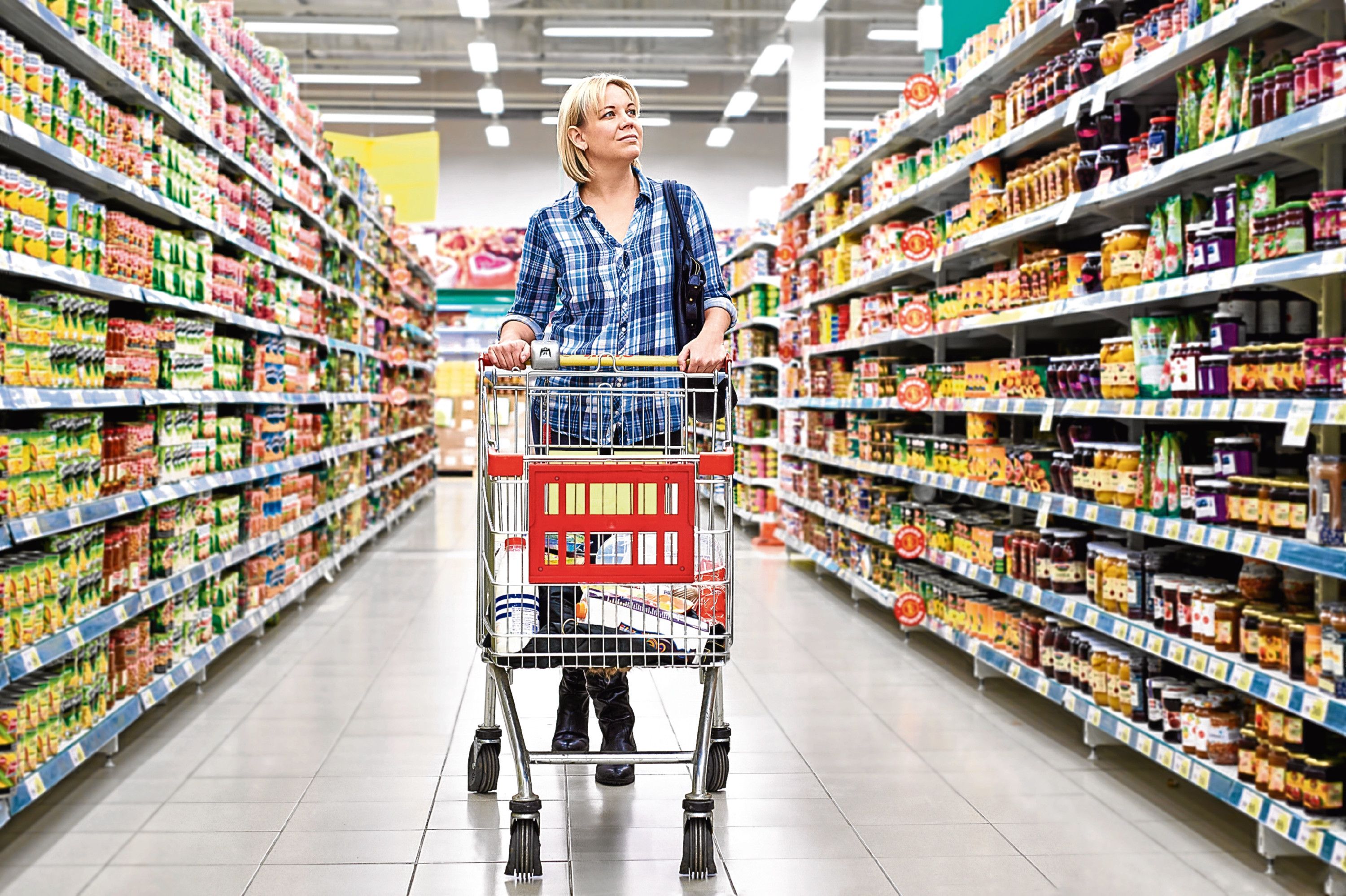
IT was recently revealed that Tesco was helping in the fight against obesity with what are known as “power aisles”.
The supermarket giant is putting healthier items on special offer in the large central aisle of their shops – where its biggest offers are usually placed.
Healthy eating campaigners are welcoming the move – but power aisles aren’t the only psychological trick supermarkets use.
Here are 12 other pieces of supermarket subterfuge deployed during your weekly shop…
The eyes have it
We only take in 1% of what we see in a store. Rather than eye level being ‘buy level’ we actually look 30% lower, more between waist and chest height. So the most cost-effective bargains are often outwith that area.
Colour codes
Two-thirds of what we focus on are colours and customers often read fewer than six words on an average shopping trip. So shops focus on the most iconic colours and shapes of packaging in prime spots.
Hello halo
Shops are well aware of the “halo effect” with the eye taking in the products immediately to the left and right of what we’re looking at. So they’ll place their own brands, not other makes, next to the top names.
Foursome real
The average shopper only knows the price of four items so shops know we won’t compute carefully targeted increases on much of our shop.
Musical daze
Consider sticking your favourite music on your headphones as you shop. Many stores play music that’s slower than the average heartbeat. That lulls you into spending more time at the store, which leads to spending almost one-third more.
Get fruity
Fresh produce like fruit and vegetables are often at the front of the shop as their bright colours put you in a good mood and inspire you to buy more.
Sticky End
Don’t be conned into thinking that what’s displayed at the end of an aisle is a good deal. Those areas are often sold to companies promoting a product which may not be the best value.
Label minded
We all know that yellow labels on items are to signify a special offer – except when they’re not. We’ve been trained to look for these deals so supermarkets often highlight some labels in a different colour – but there’s no price drop.
Slow down, spend more
Supermarkets want you to spend as long as possible in the shop, so immediately set about slowing you down. Ridges on the ground slow you down in store.
Your attention
Items marked with a theft warning immediately become more desirable. This was discovered after sales of Stella Artois went through the roof at a supermarket in England, all because the beer was marked with a security sign.
Checkout the space
The narrow space to fit your trolley at the checkout is deliberate. You’re looking at what you’re buying and could change your mind – but without the space to do a u-turn, you’re more likely to keep whatever you’ve had second thoughts about.
Magazines are the new chocolate
After years of complaints, there are now less chocolate bars at the checkout. They’ve instead been replaced by magazines – which are not only a possible last-minute impulse purchase, but distract you from an irritating wait.

Enjoy the convenience of having The Sunday Post delivered as a digital ePaper straight to your smartphone, tablet or computer.
Subscribe for only £5.49 a month and enjoy all the benefits of the printed paper as a digital replica.
Subscribe